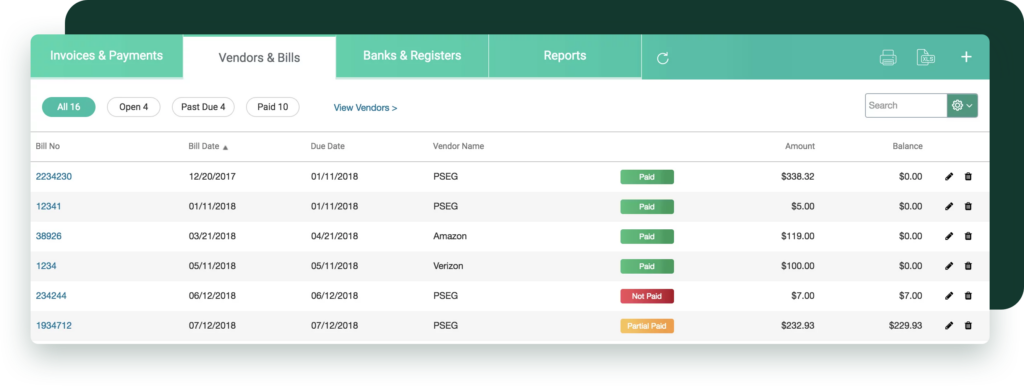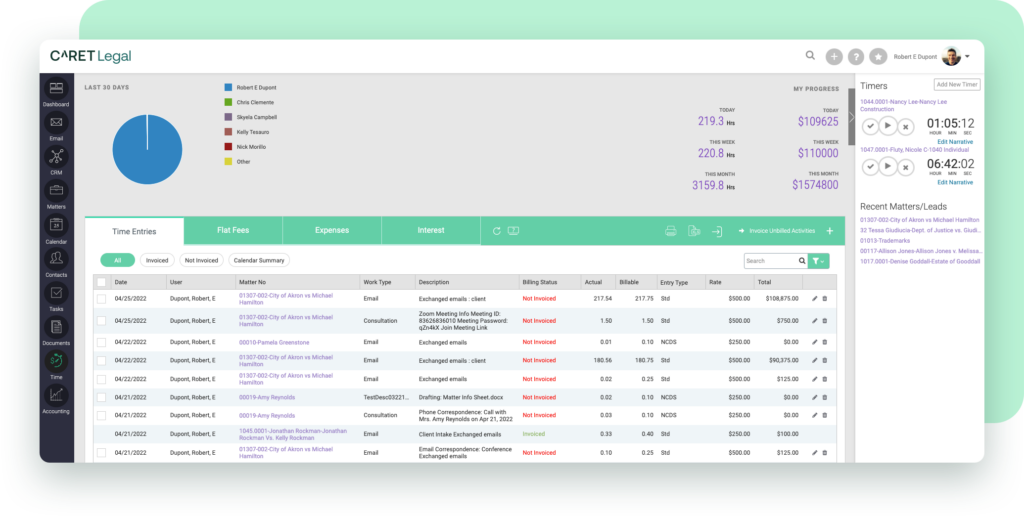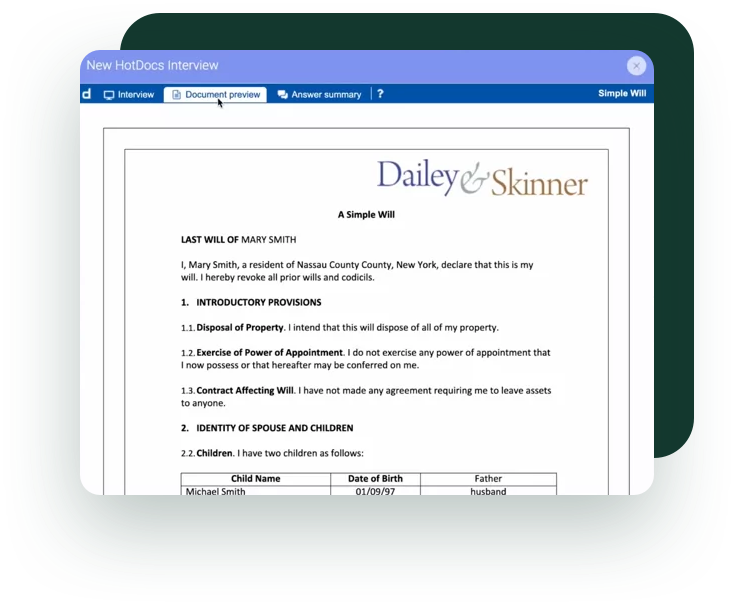Law firms that leverage technology effectively can often serve their clients more efficiently, maintain more organized case files, and have a competitive edge in the marketplace.
Effective law firm management is the backbone of any successful law firm. It’s the force that propels operations, client satisfaction, and, ultimately, business growth. When management practices are refined and implemented wisely, they yield a well-oiled legal services machine capable of overcoming obstacles and seizing opportunities. Here are our favorite law firm management tips to help firms stand out and flourish.
Top Law Firm Management Tips
In the search for operational excellence, here are some high-level tips for managing your law firm:
Embrace Technology
In today’s digital era, technology is a game-changer for law firms. It streamlines operations, enhances productivity, and provides better data for decision-making. Law firms that leverage technology effectively can often serve their clients more efficiently, maintain more organized case files, and have a competitive edge in the marketplace.
Legal practice management software can be transformative, automating time-consuming tasks such as scheduling, billing, and document generation. This software integrates front-end features, such as task management, calendaring, emailing and document management, with back-office features, like time tracking, billing and accounting, reporting and payment processing. These platforms make it easier to keep track of all cases and firm operations in one, consolidated place.
Prioritize Client Satisfaction
Happy clients are more likely to return for additional services and maintain a long-term relationship with the firm. This repeat business is critical for sustained revenue streams and stability in the firm’s operations.
Clients who have had a positive experience with your firm are the best ambassadors. They are likely to refer others, increasing your client base and, consequently, revenue.
Here are some ways your firm can improve client satisfaction:
- Transparent communication: Keeping clients in the loop regarding their case status builds trust and mitigates confusion or frustration.
- Meeting deadlines: Consistently meeting or exceeding deadlines reassures clients of your firm’s competency and reliability.
- Address client concerns promptly and professionally: Responding quickly to client concerns or inquiries shows that you value their business and are attentive to their needs.
Invest in Your Team
Providing your team with the latest legal technology tools allows them to work more effectively, reducing the time and effort required to perform routine tasks and enabling them to focus on higher-level work that requires their legal expertise.
Cloud-based software allows your team to work from anywhere and still stay connected with their team and the work that needs to be done. Fostering a flexible work environment can improve job satisfaction, reduce burnout, and maintain a high level of productivity. Flexible working conditions are now a key differentiator for attracting and retaining top legal talent.
Effective Financial Management
Careful financial planning, along with diligent monitoring of expenses, is critical for profitability. Efficient client billing practices ensure that the firm is compensated for its services in a timely manner, which is crucial for cash flow.
Focus on real-time data to help grow your practice. Regularly reviewing reports and analytics helps to understand the firm’s financial health, informing strategies for growth and expansion, and identifying potential areas for cost savings or investment.

Billing and reporting module in CARET Legal
Continuous Evaluation
An ongoing process of evaluation operations within your practice can help your firm stay ahead of inefficiencies, adapt to changes in the legal market, and continually refine service delivery. A thorough review of these areas can help pinpoint what is working well and what might need adjustment. This may involve upgrading technology, providing additional training for staff or adjusting financial strategies.
Develop a Strong Firm Culture
A positive firm culture can boost morale, enhance productivity and employee engagement, and improve retention rates. When team members feel valued and aligned with the firm’s ethos, they are more likely to invest themselves in their work and the firm’s success.
A culture of respect and professionalism helps to attract and retain top talent. Respected employees are more engaged, motivated, and dedicated to upholding the firm’s reputation and delivering quality legal services.
By weaving these management threads into the fabric of a law firm, leaders can establish a resilient and dynamic practice that not only survives but thrives in an ever-evolving legal landscape.
With cloud-based tools, lawyers can maintain effective communication and foster collaboration with their clients and teams.
Leverage Technology for Better Firm Management
While powerful, the law firm management tips above are pretty broad. What about advice for specific aspects of running day-to-day operations?
Effective Scheduling
Technology offers a multitude of advantages for managing complex schedules in a legal practice. With the right scheduling tools, firms can avoid double bookings, easily reschedule appointments, and sync with multiple calendars. It enables seamless integration of court dates, client meetings, and internal events, providing a comprehensive view of the firm’s activities at a glance. This level of organization is essential for lawyers who balance multiple cases and commitments.
Simplified Time Tracking
Automated time tracking tools help capture every minute of billable work with precision. Legal practice management platforms allow attorneys to convert tasks, emails, and calendar events directly into time entries, streamlining the process and ensuring that all actions related to case work are billable.
When time is tracked and billed accurately, invoices can be sent and paid promptly, driving stronger cashflow. Efficient time tracking minimizes disputes over billing, as clients can see a clear record of completed work.

Timetracking in CARET Legal
Hands-Off Billing
By utilizing technologies that generate automatic invoices based on recorded time and expenses, billing can become a more streamlined process. This automation can reduce administrative workloads, minimize the risk of human error, and promote consistency in billing practices.
Automated billing systems process invoices quickly and with fewer mistakes than manual entry, allowing staff to focus on more complex, high-value tasks.
Communication and Collaboration
With cloud-based tools, lawyers can maintain effective communication and foster collaboration with their clients and teams. These tools support a better work-life balance by enabling lawyers to work from anywhere, at any time, without compromising their ability to work together and stay up-to-date on case-related information.
Secure portals allow clients to easily access and review documents as well as pay outstanding invoices. This can help to streamline the legal process and reduce the need for back-and-forth communication via email or phone. Texting abilities offer secure and convenient ways for clients to get in touch with their lawyers about case-related details.
Improve Employee Engagement and Client Satisfaction
With the right legal technology, your firm can attract employees, reduce turnover and generate more business.
Implementing Document Automation Software
Document automation software helps firms streamline their document creation process and improve efficiency. Here are strategic tips for implementation:
- Understand your current processes: Before adopting new software, thoroughly analyze your existing document creation processes. This understanding will help you identify the specific needs and potential areas of improvement that document automation can address.
- Test thoroughly: Prior to full-scale implementation, conduct comprehensive testing with a variety of document types to ensure that the software performs as needed. Catching issues in a controlled environment can prevent problems later on.
- Choose the right tool: Select a document automation tool that is tailored to the needs of your firm. It should integrate well with your current systems and be flexible enough to handle the types of documents you frequently use.
- Train your team: Ensure that all team members who will use the software are properly trained. Effective training will maximize the benefits of document automation and lead to better adoption across the firm.
- Continually review and improve: After implementation, continuously review the effectiveness of the document automation software. Solicit feedback from users and make adjustments as necessary to improve performance and usability.

Powerful document automation capabilities with HotDocs
Implementing these law firm management tips can lead to a significant increase in efficiency, accuracy, and productivity, ultimately contributing to the overall success of your firm’s operations.